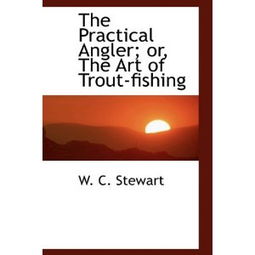Introduction:
Fishing is an ancient pastime that has been enjoyed by people around the world for centuries. One of the fundamental tools in a fisherman's arsenal is the fishing hook. Learning how to use a fishing hook effectively can significantly enhance your chances of a successful catch. In this article, we'll delve into the techniques and provide a detailed illustration guide on how to use a fishing hook to fish like a pro.
Section 1: Understanding the Fishing Hook
Before we dive into the technique, it's essential to understand the different types of fishing hooks available and their uses. Here are some common types:
- Circle Hooks: Ideal for catching fish with their mouths closed, as they are less likely to be ejected.
- Jig Hooks: Used with jigs to imitate baitfish or lures, these hooks are great for bottom fishing.
- Screw Hooks: Perfect for rigging live bait or artificial lures, they are known for their sharp points and durable construction.
- Worm Hooks: Smaller and lighter, these hooks are designed for rigging worms or small baits.
Section 2: Preparing Your Fishing Hook
- Select the Right Size: The size of the hook should match the size of the bait or lure you're using. A general rule is to use a hook that can comfortably fit a piece of bait or a lure through the eye without bending.
- Thread the Line: Pass the fishing line through the eye of the hook. Ensure that the line is taut and runs smoothly through the hook.
- Attach the Bait or Lure: Depending on the type of fishing you're doing, attach the bait or lure to the hook. For live bait, you may need to thread it through the hook's eye or use a split ring. For artificial lures, follow the manufacturer's instructions.
Section 3: The Art of Casting
- Hold the Rod: Grip the fishing rod with your dominant hand. Your index finger should be on the reel, and your thumb should be near the rod's handle.
- Load the Reel: Wind the line onto the reel until you have enough line to cast without it getting tangled.
- Point the Rod: Aim the rod towards your target and bend it slightly at the elbow to load the rod with tension.
- Cast: With a quick, smooth motion, sweep the rod back and then forward, releasing the line as you come to the end of your cast. Practice makes perfect, so don't be afraid to cast multiple times to get the hang of it.
Section 4: The Technique of Fishing with a Hook

- Drop the Bait: Allow the bait or lure to sink to the desired depth. The depth depends on the type of fish you're targeting and the conditions of the water.
- Retrieve: Once the bait has reached the desired depth, start retrieving the line. The speed of retrieval can vary, but a slow, steady retrieve is often effective.
- Watch for Bites: Pay close attention to the line. If you feel a sudden tug or a change in tension, it could be a bite. Set the hook quickly by pulling the rod down and back towards you.
- Play the Fish: Once you've set the hook, play the fish by reeling in slowly and allowing it to run when it struggles. This is crucial to ensure you don't break off the line or injure the fish.
Section 5: Illustration Guide
To help you visualize the process, here's a step-by-step illustration guide on how to use a fishing hook:
[Insert illustrations here]
Conclusion:
Using a fishing hook is a skill that takes practice to master. By understanding the different types of hooks, preparing them correctly, and mastering the casting and fishing techniques, you'll be well on your way to becoming a proficient angler. Remember, patience and practice are key to success on the water. Happy fishing!












